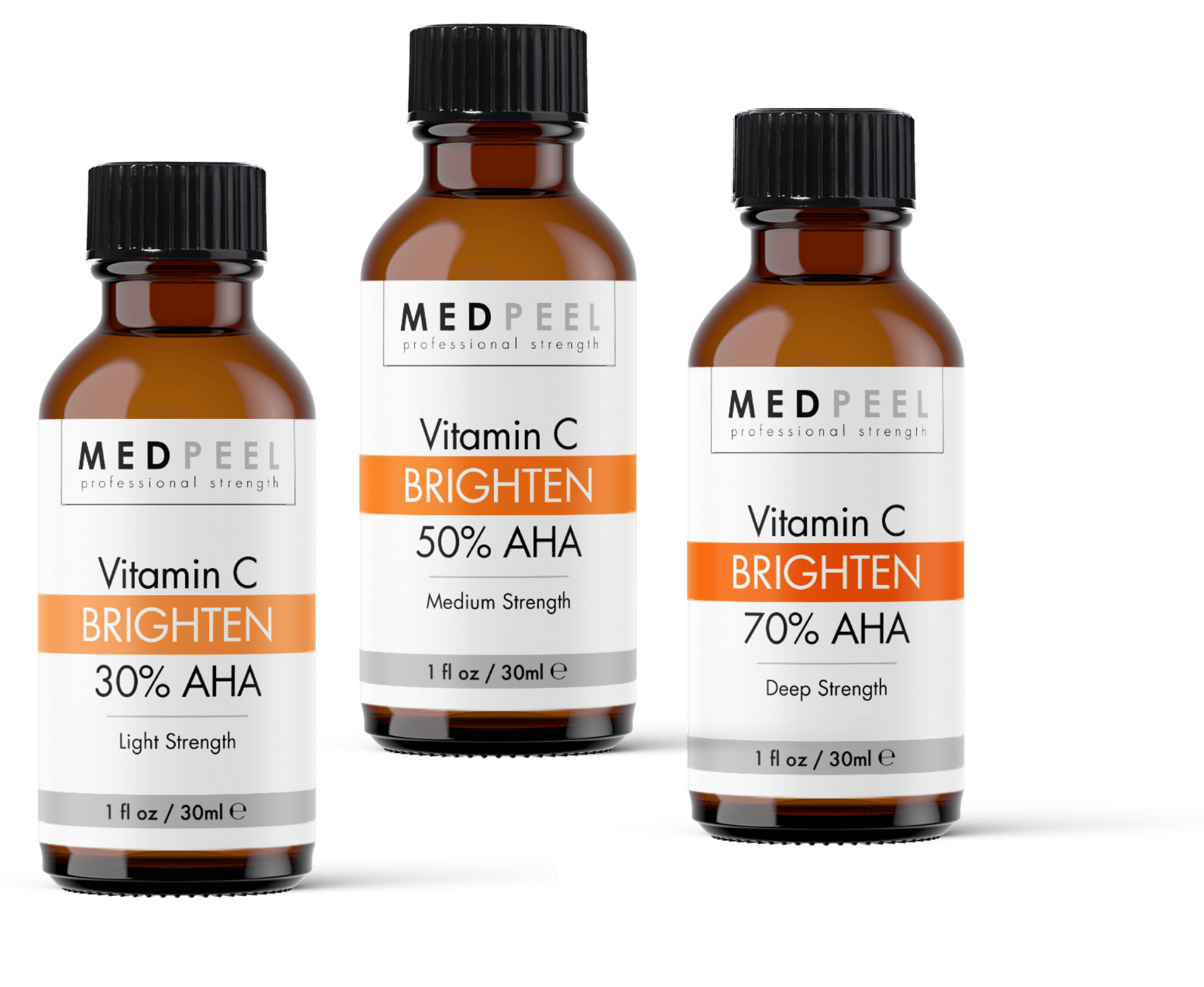




Chemical peels work by causing controlled damage to the outer layers of the skin, which triggers a healing response. When performing the AHA Vitamin C peel, you may experience a mild to moderate burning or stinging sensation as the acid penetrates the skin. After the peel, the skin will likely be red, swollen, and tender. Over the next several days, the skin may begin to darken and peel or flake off, revealing smoother, brighter, and clearer skin underneath.
Depending on the depth of the peel performed, the recovery time can range from a few days to a week or more. It is important to follow proper pre and post peel instructions and to avoid picking at any peeling or flaking skin that may occur. While peeling is a common side effect of chemical peels, it is not a definitive indicator of the peel's success. When evaluating the effectiveness of a chemical peel, look for an improvement in the skin's overall texture and tone.
Chemical peels work by causing controlled damage to the outer layers of the skin, which triggers a healing response. When performing the AHA Vitamin C peel, you may experience a mild to moderate burning or stinging sensation as the acid penetrates the skin. After the peel, the skin will likely be red, swollen, and tender. Over the next several days, the skin may begin to
darken and peel or flake off, revealing smoother, brighter, and clearer skin underneath.
Depending on the depth of the peel performed, the recovery time can range from a few days to a week or more. It is important to follow proper pre and post peel instructions and to avoid picking at any peeling or
flaking skin that may occur. While peeling is a common
side effect of chemical peels, it is not a definitive indicator of the peel's success. When evaluating the effectiveness of a chemical peel, look for an improvement in the skin's overall texture and tone.
The AHA Vitamin C peel is generally safe for all skin tones and types, particularly those with dry to combination skin. It is highly recommended for all peel users to perform a patch test before applying any peel to a large area of the skin. Glycolic acid can be irritating to some individuals, especially those with sensitive skin. It is recommended to start with lower concentrations and gradually increase usage to allow the skin to acclimate.
It's important to be patient and take a gradual approach when it
comes to chemical peels. By first introducing your skin to mild, low strength peels and slowly working your way up to higher strengths, you are safely building up your skin's tolerance and minimizing the risk of adverse reactions.
Improves overall skin texture and clarity. Deeply cleanses pores to
remove impurities. Salicylic Acid is also beneficial in inflammation reduction, breakout prevention and helps to regulate excess oil production.
Help maintain long-term results of your salicylic peel by keeping the skin hydrated with regular use of Medpeel Hydra-Plump 2.5% Hyaluronic Serum and wearing sun protection of SPF 30+. Use a Medpeel Daily Exfoliator, such as Salicylic 2%, to help gently buff away any peeling or flaking skin and to keep skin clear and smooth.


